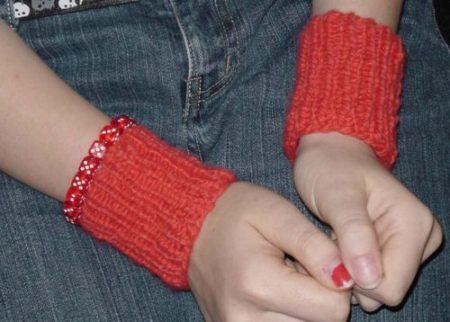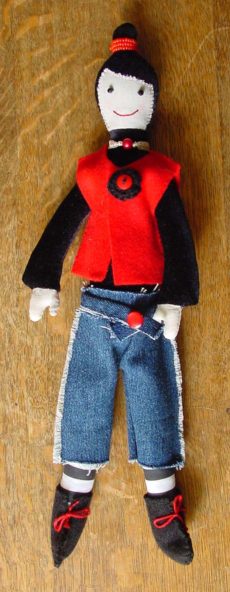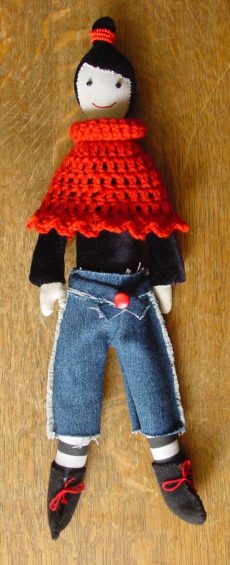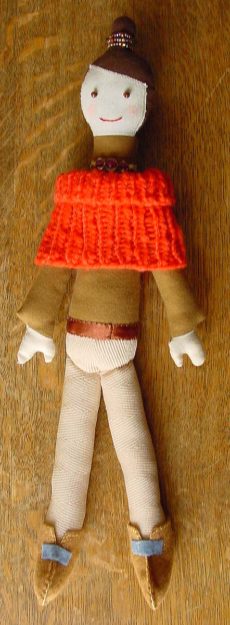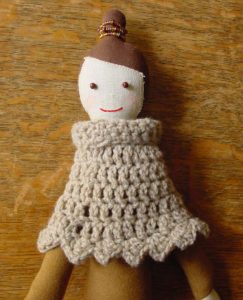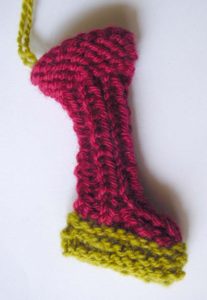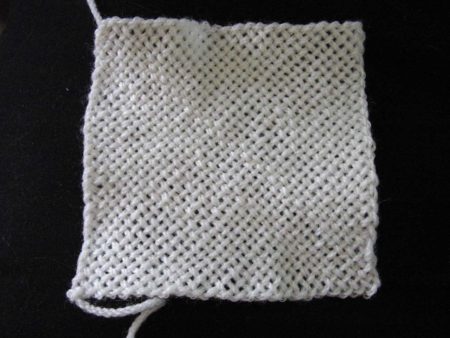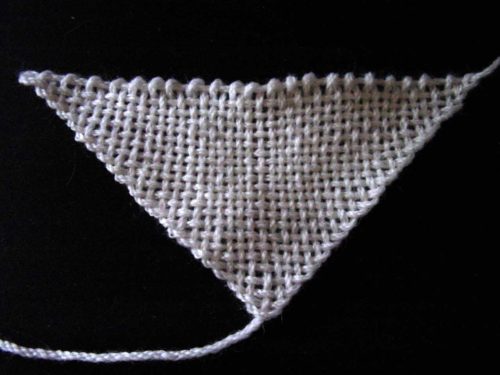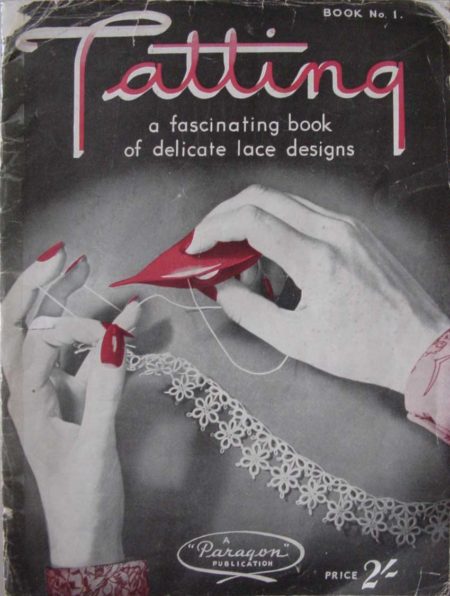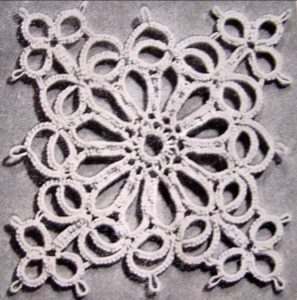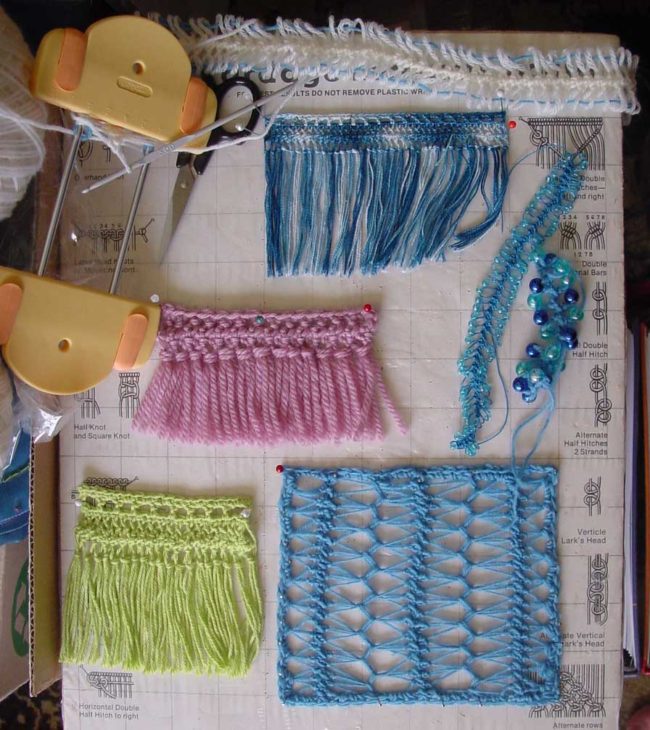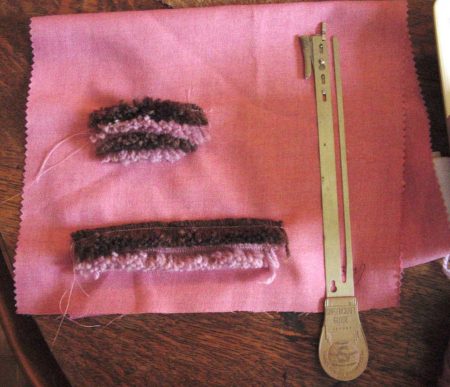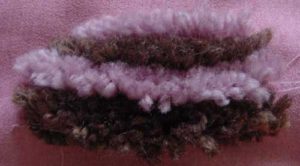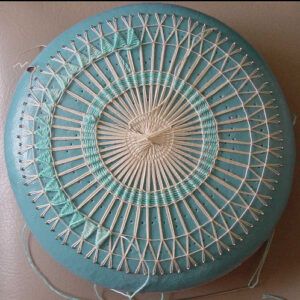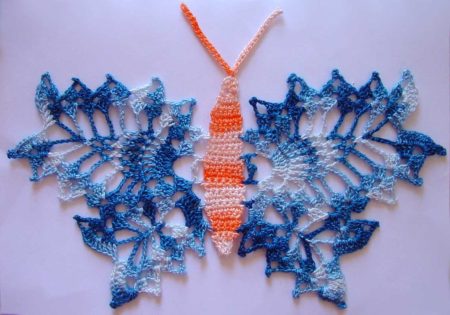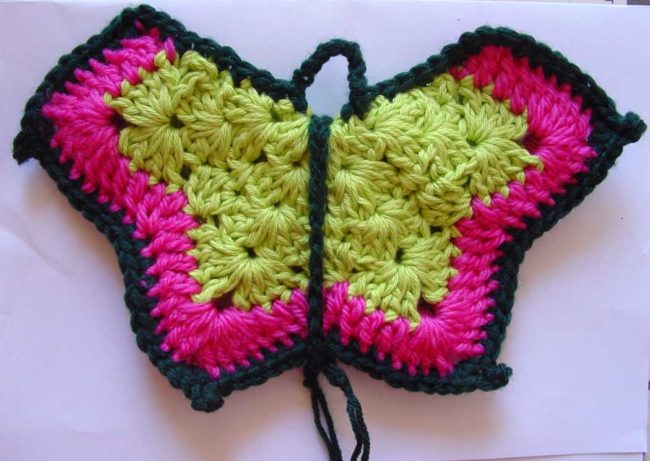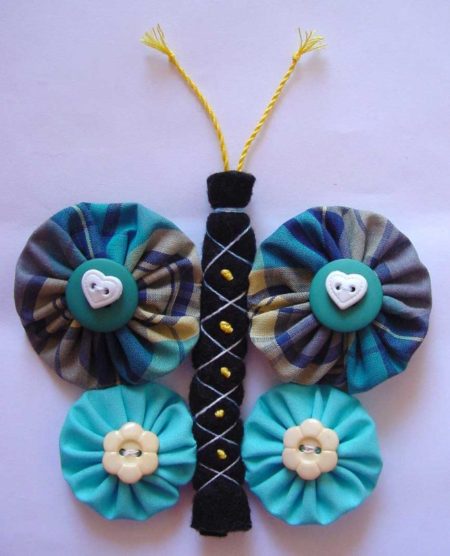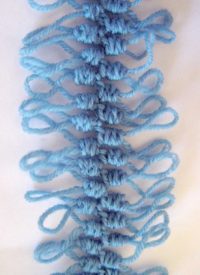After falling ill in the last couple of months of last year I fell drastically behind in the Square Deal Weave-Along so I have spent the past few days catching up. Here are lots and lots (and LOTS!) of pictures and details from my adventures 🙂 Since there are so many images I’m making them a bit smaller than usual. You can click on the images to view the larger pictures in my flickr account. Firstly, Wide Wale Corduroy. (Am I the only person who always wants to spell that “Wide Whale”?)
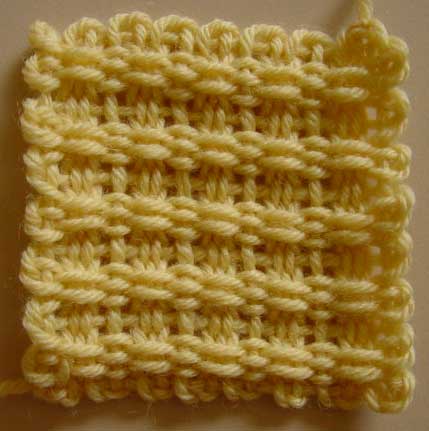
I love this weave. It has a lovely texture, it’s soft and squishy and generally encompasses everything I like about hand weaves (textured weaves are my favourite). I used up a whole skein of Cleckheaton Country 12 ply and made quite a few squares. When I began to run out of that skein of yarn I wove this square. Rounds 1-3 are the Cleckheaton Country 12 ply and I wove with two strands of hand painted 8 ply wool. (That’s DK weight to those who don’t know Aussie yarn weights).
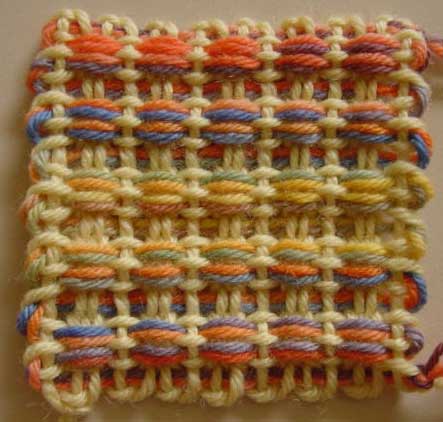
This is the front and
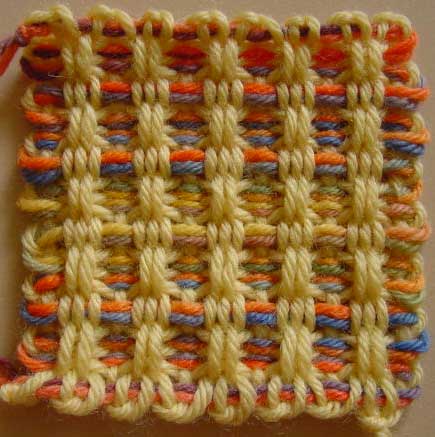
this is the back. I like both 🙂

I also tried rounds 1-3 in blue and wove with red. All 8 ply thickness, 100% wool I want to try this weave on my table loom, worked in a single colour. A while ago I posted about weaving triangles on a 4 inch square weavette loom. I made more triangles and stitched them together in a pinwheel design.
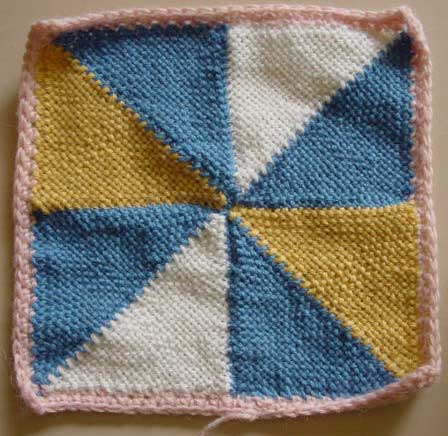
The triangles are really fiddly to weave but they do look nice :). The triangles were woven using various 8 ply wools. ”

I experimented briefly with the inlay technique. This is another technique and look that I really enjoy. I will be playing with this, and related techniques, on my table loom as well. Next (working backwards through the weave-along), is seven diagonal stripes.

I worked the first style in one colour, again using 8 ply weight wool.
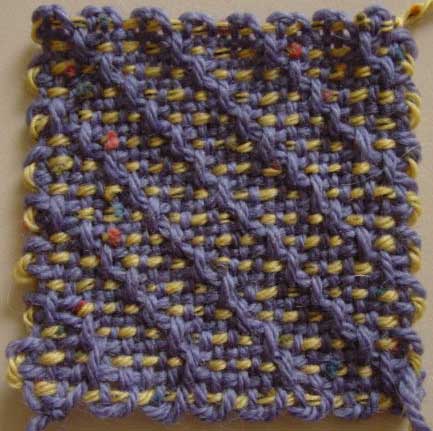
Then I worked the mirrored seven diagonal stripes variation using the same blue for the first three rounds and a speckled yellow 8 ply wool for the weaving. A five stripe diagonal weave was mentioned in the same post so I tried that too.
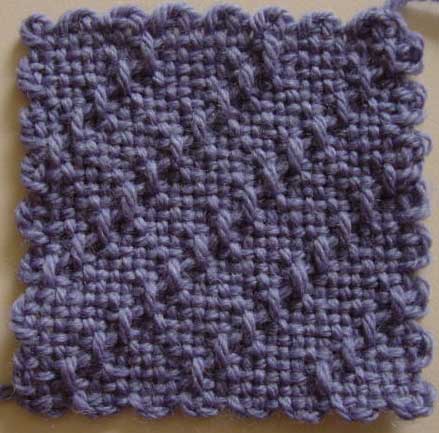
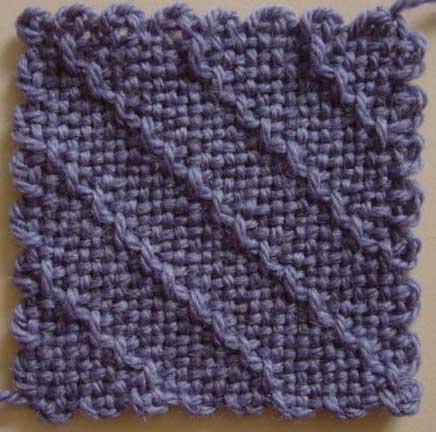
Furrows was the next design. I worked quite a few squares in single colours of 8 ply wools.
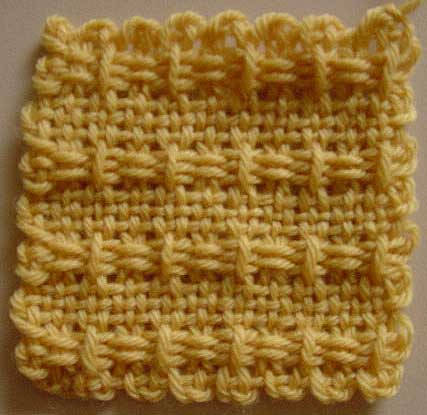
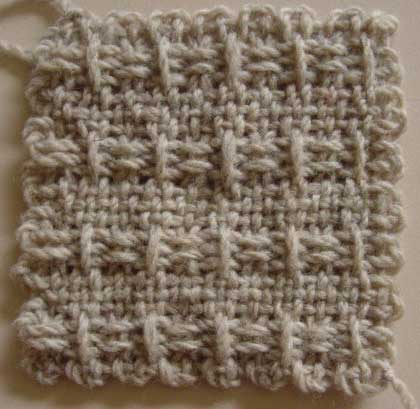
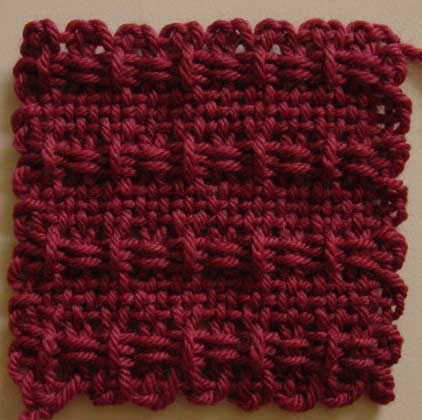
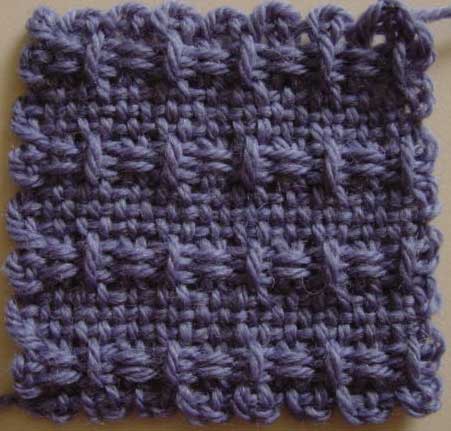
Furrows quickly became another favourite texture weave that I want to play with on my table loom 🙂 Next is the diagonal half square.

I wound the first variation with three rounds of blue 8 ply weight wool, and wove with pink.

Then I wove the mirrored variation in a single colour. I like the two-colour version best as I think it shows up the design more. Next we have rigby weave. I played around with this one quite a bit.
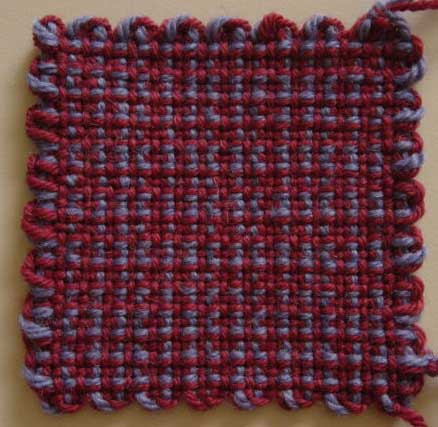
Firstly I wound rounds one and two with a strand of 8 ply weight blue and a strand of 8 ply weight purply-red held together. Rounds 3 and the weaving were done with the blue yarn only. This is entirely too stiff and was a bit difficult to weave.
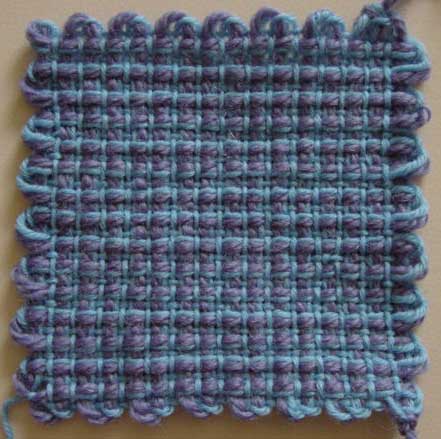
Then I tried rounds one and two with the blue wool and a strand of 4 ply wool (fingering weight) held together and worked round 3 and the weaving with the 4 ply wool. This was much better. I really like the subtle effect with the similar colours.
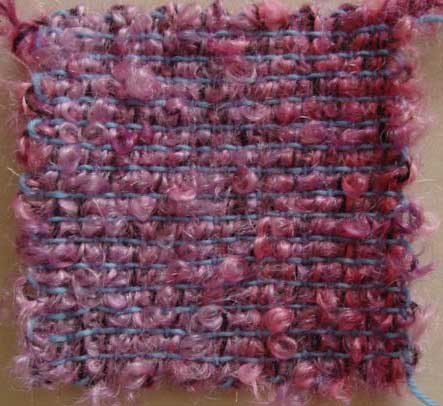
I also tried the first two rounds with two strands of pink bouclé, then wound round three and wove with the same fingering weight blue wool from the previous square. The weaving was surprisingly a lot easier than I thought it would be, given the loopiness and bulk of the bouclé. This one worked out a little stiff though.

I tried again with a single strand of the bouclé and the third round and weaving worked with the purply-red 8 ply weight wool. This square has a nicer hand but lost the fun of the loopy bouclé texture.

I liked the bouclé so I went ahead and wove a plain-weave square with it. I may use up the rest of the skein in plain weave squares. Once again, I love the texture of it 🙂 Even though I have a set of rectangular looms, I had a go at weaving odd sized rectangles on my square loom. It’s nice to know these techniques in case they’re ever needed.
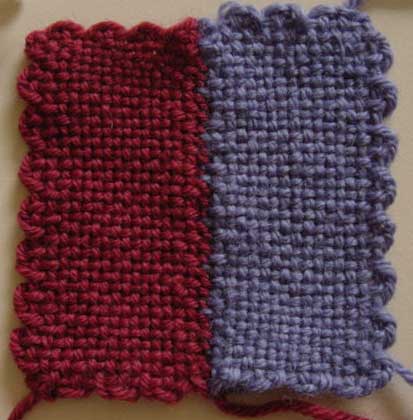
I made two, two by four inch rectangles and stitched them together to make a square I could use in my blanket. These are 8 ply weight wools again. I found them to be quite easy to weave once I figured out the technique. Lines and Bars, and Bars and Squares were next.
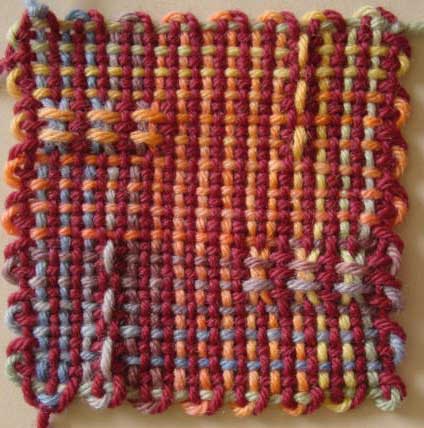
First I wove bars and lines with two rounds of purply-red and two rounds of rainbow. It almost completely obscured the design.

I tried again with three rounds of dark pink and weaving with purply-red. Whilst this is not one of my favourite weaves at least you can see it better this way…

Finally I tried bars and squares the same way, with blue and yellow (all 8 ply weight wools). I only wove one square in eight single rib. I really like it so I shall have to do more. It’s another lovely squishy textured weave.
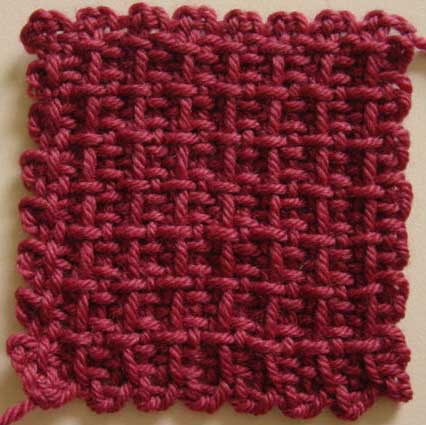
I’m not entirely sure if that’s the back or the front… I wasn’t sure if I had done any ribbing weave so I wove this new square in purply-red 8 ply weight wool.
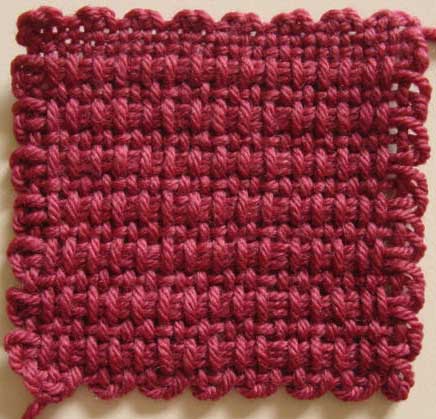
As it turned out, I had done a lot of ribbing squares before I fell ill so this is another one to add to the blanket 🙂 Finally in my square deal weave-along catch-up are the double outline diamond squares that I wove before I fell ill but never blogged.
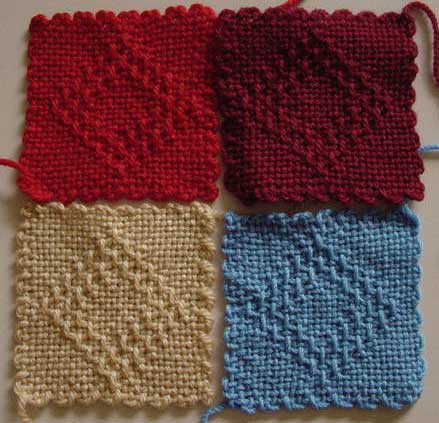
Four 4 inch squares woven with 8 ply weight wools.
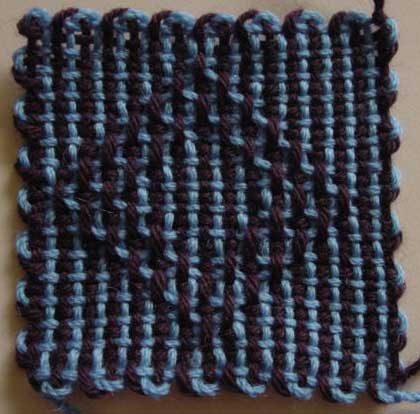
Two rounds of light blue and two rounds of dark purple. I prefer the plain colours.
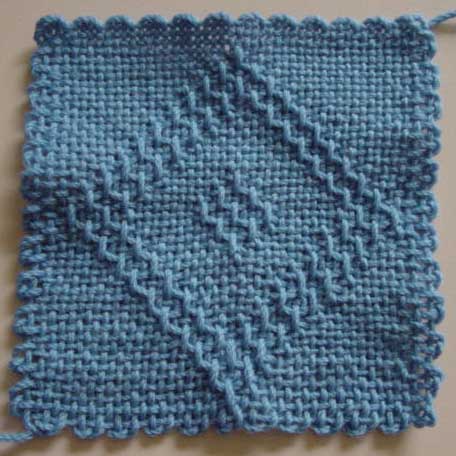
A six inch square in light blue 8 ply weight wool
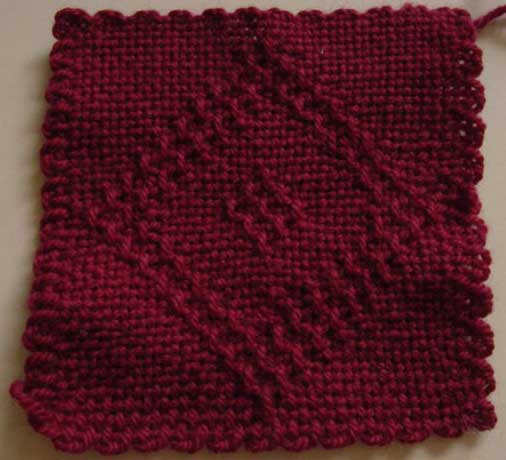
and the same in purply-red. I wove a total of four large squares with this design. That’s all for the square deal weave-along. I didn’t work the fringed squares because I have no need for them in my project but I definitely want to make alion at some stage. That isn’t all the weavette weaving I did though. I played with this weave from the book I bought from the makers of the weavette looms.
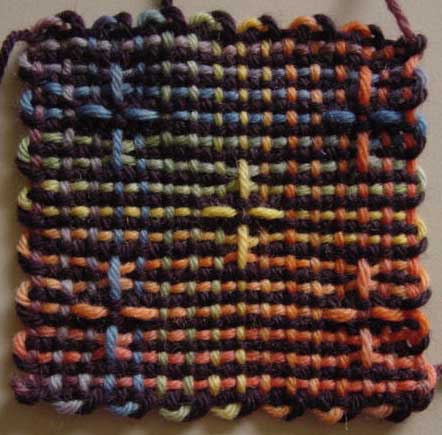
As with one of the previous weaves I did two rounds purple and two rainbow. The busy colours are just too much for the design.

I tried again with tan and red. I think this effect is interesting and would probably work well in two colours that are less “jarring” together.

I finished up with the blue again (all of these are 8 ply weight wools). I’m not overly keen on this on the weavette looms but it would make a nice weave on a larger project. Lastly I wove the heart designs that were posted in the looms to go group at ravelry. All of these are worked in 8 ply weight wools.
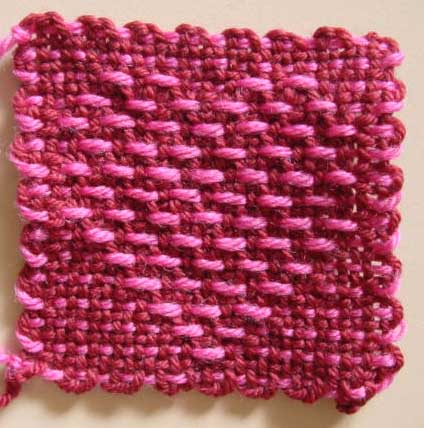
I wove this one with pink. This is the back of the weaving. I liked the back the best.
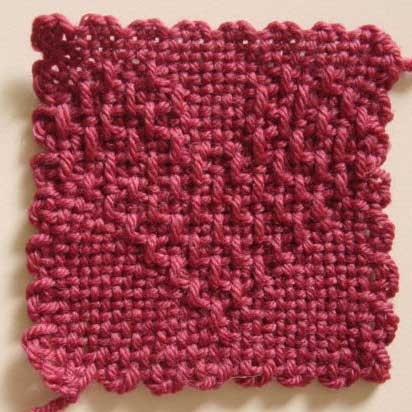
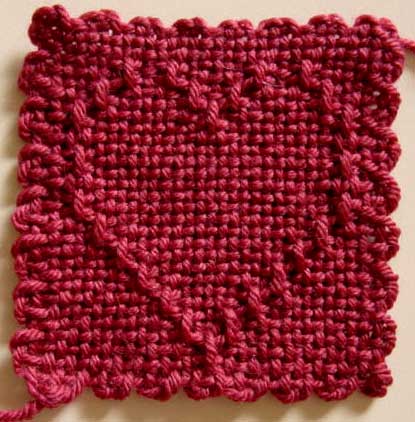
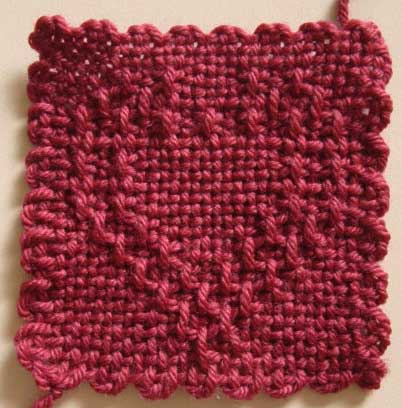
After playing with all of these weaves and designs it dawned on me that I may be able to make squares with the letters of the alphabet. I’m up to “B” so I’ll keep you posted on how it goes!

